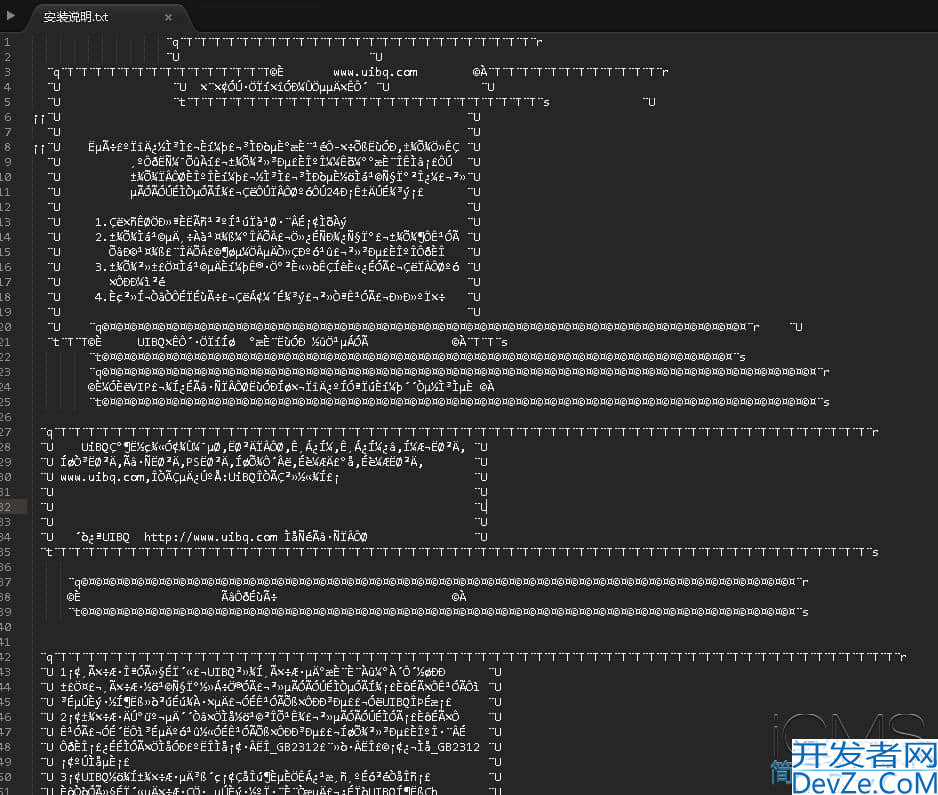Python连接和操作Elasticsearch的流程步骤
目录
- 引言
- 1. 环境准备
- 1.1 安装 Elasticsearch
- 使用 docker 安装 Elasticsearch:
- 使用官方安装包:
- 1.2 安装 python Elasticsearch 客户端
- 2. 连接 Elasticsearch
- 2.1 连接到本地的 Elasticsearch 服务
- 2.2 连接到远程 Elasticsearch 服务
- 3. 创建索引和映射
- 3.1 创建索引
- 3.2 创建带有映射的索引
- 4. 添加数据到 Elasticsearch
- 4.1 单条数据插入
- 4.2 批量插入数据
- 5. 查询数据
- 5.1 基本查询
- 5.2 精确匹配查询
- 5.3 布尔查询
- 5.4 范围查询
- 6. 更新和删除数据
- 6.1 更新数据
- 6.2 删除数据
- 7. 聚合查询
- 7.1 聚合查询示例
- 8. 删除索引
- 9. 高级应用
- 9.1 索引别名
- 9.2 索引模板
- 总结
引言
Elasticsearch 是一个强大的分布式搜索引擎,广泛应用于日志分析、实时搜索和大数据分析等场景。它支持快速的文本检索、大数据量的数据存储和实时的数据分析。Python 提供了官方的 Elasticsearch 客户端库,方便我们与 Elasticsearch 进行交互。
本文将详细介绍如何使用 Python 连接和操作 Elasticsearch,包括安装客户端、基本的操作(如创建索引、添加数据、查询数据等)以及高级应用(如聚合查询、索引映射等)。
1. 环境准备
1.1 安装 Elasticsearch
在开始之前,你需要确保已经安装并运行了 Elasticsearch。如果尚未安装,可以参考以下步骤安装:
使用 Docker 安装 Elasticsearch:
docker pull docker.elastic.co/elasticsearch/elasticsearch:7.10.0 docker run --name elasticsearch -d -p 9200:9200 -p 9300:9300 elasticsearch:7.10.0
这样 Elasticsearch 会启动在 localhost:9200 端口。
使用官方安装包:
你也可以从 Elasticsearch 官网 下载并安装。
1.2 安装 Python Elasticsearch 客户端
安装 Elasticsearch 的 Python 客户端 elasticsearch,它是与 Elasticsearch 交互的官方库。
pip install elasticsearch
2. 连接 Elasticsearch
2.1 连接到本地的 Elasticsearch 服务
from elasticsearch import Elasticsearch
# 连接本地的 Elasticsearch 实例
es = Elasticsearch([{'host': 'localhost', 'port': 9200}])
# 检查连接是否成功
if es.ping():
print("连接成功!")
else:
print("连接失败!")
2.2 连接到远程 Elasticsearch 服务
如果你的 Elasticsearch 服务在远程服务器上,你可以修改连接配置:
es = Elasticsearch([{'host': '远程IP地址', 'port': 9200}])
# 检查连接
if es.ping():
print("连接成功!")
else:
print("连接失败!")
3. 创建索引和映射
在 Elasticsearch 中,所有数据存储在索引(Index)中,索引有自己的结构。映射(Mapping)是索引中字段的定义。
3.1 创建索引
# 创建一个索引 index_name = "my_index" response = es.indices.create(index=index_name, ignore=400) # ignore 400 错误是因为索引已存在 print(responsandroide)
3.2 创建带有映射的索引
如果你想在创建索引时定义字段类型,可以指定映射。以下是一个包含映射的例子:
mapping = {
"mappings": {
"properties": {编程客栈
"name": {"type": "text"},
"age": {"type": "integer"},
"timestamp": {"type": "date"}
}
}
}
response = es.indices.create(index="my_index_with_mapping", body=mapping, ignore=400)
print(response)
4. 添加数据到 Elasticsearch
向 Elasticsearch 添加数据可以通过 index 操作来完成,数据将作为一个文档被 插入。
4.1 单条数据插入
document = {
"name": "John Doe",
"age": 29,
"timestamp": "2024-12-24T10:00:00"
}
# 插入数据到索引
response = es.index(index="my_index", document=document)
print(response)
4.2 批量插入数据
如果你想批量插入多条数编程客栈据,可以使用 bulk API。
from elasticsearch.helpers import bulk
# 批量插入数据
actions = [
{
"_op_type": "index", # 操作类型,可以是 index、update、delete
"_index": "my_index",
"_source": {
"name": "Alice",
"age": 30,
"timestamp": "2024-12-24T12:00:00"
}
},
{
"_op_type": "index",
"_index": "my_index",
"_source": {
"name": "Bob",
"age": 35,
"timestamp": "2024-12-24T12:05:00"
}
}
]
# 执行批量插入
success, failed = bulk(es, actions)
print(f"成功插入 {success} 条,失败 {failed} 条")
5. 查询数据
Elasticsearch 提供了强大的查询功能,包括基本的匹配查询、布尔查询、范围查询等。
5.1 基本查询
通过 search API,可以执行简单的查询。例如,查询 my_index 索引中的所有文档。
response = es.search(index="my_index", body={
"query": {
"match_all": {} # 查询所有文档
}
})
print(response)
5.2 精确匹配查询
response = es.search(index="my_index", body={
"query": {
"match": {
"name": "John Doe" # 查找name字段为"John Doe"的文档
}
}
})
print(response)
5.3 布尔查询
布尔查询允许你结合多个条件进行复杂的查询。
response = es.search(index="my_index", body={
"query": {
"bool": {
"must": [
{"match": {"name": "Alice"}},
{"range": {"age": {"gte": 25}}}
],
"filter": [
{"term": {"timestamp": "2024-12-24T12:00:00"}}
]
}
}
})
print(response)
5.4 范围查询
通过 range 可以查询某个字段的范围数据,例如查找年龄大于 30 的用户。
response = es.search(index="my_index", body={
"query": {
"range": {
"age": {
"gte": 30
}
}
}
})
print(response)
6. 更新和删除数据
6.1 更新数据
更新某个文档时,可以通过 update 操作,只更新指定的字段。
document_id = android"1" # 假设这是我们要更新文档的 ID
update_doc = {
"doc": {
"age": 31
}
}
response = es.update(index="my_index", id=document_id, body=update_doc)
print(response)
6.2 删除数据
通过 delete 操作删除文档。
document_id = "1" # 假设这是我们要删除文档的 ID response = es.delete(index="my_index", id=document_id) print(response)
7. 聚合查询
Elasticsearch 支持强大的聚合功能,可以用于数据分析,例如统计某字段的平均值、最大值、最小值等。
7.1 聚合查询示例
response = es.search(index="my_index", body={
"size": 0, # 不返回文档,只返回聚合结果
"aggs": {
"average_age": {
"avg": {
"field": "age"
}
},
"age_range": {
"range": {
"field": "age",
"ranges": [
{"to": 30},
{"from": 30, "to": 40},
{"from": 40}
]
}
}
}
})
# 打印聚合结果
print(response['aggregations'])
8. 删除索引
如果不再需要某个索引,可以将其删除。
response = es.indices.delete(index="my_index", ignore=[400, 404]) print(response)
9. 高级应用
9.1 索引别名
在 Elasticsearch 中,别名(alias)是指向一个或多个索引的名称,可以用来简化查询或在索引升级时不改变应用程序代码。
# 创建索引别名
response = es.indices.put_alias(index="my_index", name="my_index_alias")
print(response)
# 使用别名查询
response = es.search(index="my_index_alias", body={
"query": {
"match_all": {}
}
})
print(response)
9.2 索引模板
索引模板用于自动为新创建的索引应用设置(例如映射、分片数量等)。
template = {
"index_patterns": ["log-*"], # 匹配所有以 log- 开头的索引
"mappings": {
"properties": {
"timestamp": {"type": http://www.devze.com"date"},
"log_level": {"type": "keyword"}
}
}
}
response = es.indices.put_template(name="log_template", body=template)
print(response)
总结
通过本文的介绍,你已经掌握了如何使用 Python 连接并操作 Elasticsearch,包括基本操作(如创建索引、添加数据、查询数据等)以及一些高级功能(如聚合查询、索引模板和别名等)。Elasticsearch 是一个非常强大的工具,可以帮助你快速处理和分析大规模数据。希望这篇指南对你在实际开发中有所帮助!
以上就是Python连接和操作Elasticsearch的流程步骤的详细内容,更多关于Python连接和操作Elasticsearch的资料请关注编程客栈(www.devze.com)其它相关文章!







 加载中,请稍侯......
加载中,请稍侯......
精彩评论